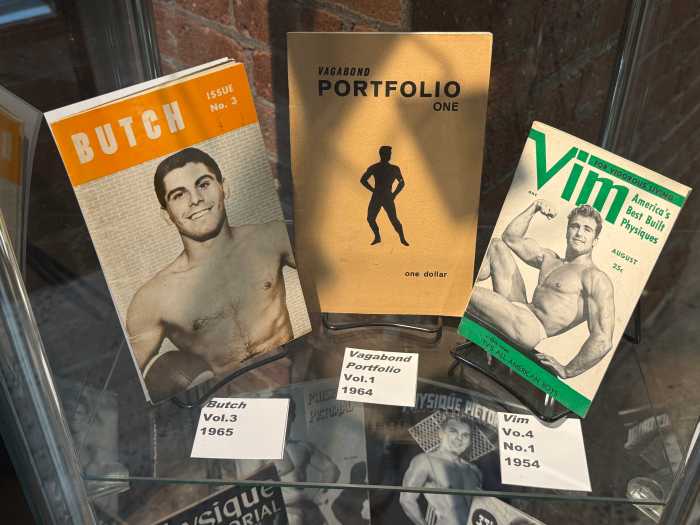In an exhibition that is largely focused on prints but also includes a handful of unique drawings, William Bennett Gallery aims to make another case for Salvador Dalí.
The premise of the show, which according to the gallery owner Mr. William Bryan Ledford “is the result of a year’s worth of research and 8-10 months spent sourcing and acquiring the art,” is reflected in its title. It was inspired by one of the artist’s most famous paintings, 1931’s “The Persistence of Memory” — suggesting that Dalí continues to inspire an eclectic audience.
Twenty years after his death (on January 23, 1989), the Spanish artist is known as much for the strikingly bizarre images that helped to define Surrealism as for his eccentricities. Dalí was an incredibly skilled draftsman equipped with a fascinating imaginative mind — but he was also an extrovert who created a colorful, scandalous persona that provoked the public’s attention. Dalí’s taste tended towards the excessive, and he often proclaimed a strong passion for everything luxurious and gilded. He romanticized the unknown and hence, the exotic. He cherished everything oriental, be it in clothes, accessories, or to the extent that he claimed Arabian ancestors (descended from the Moors).
In life, as well as in art, Dalí was calculatedly controversial. One of his most shocking decisions perhaps, especially to his fellow artists, was his refusal to explicitly denounce the Franco regime. In her book “Surrealism and the Spanish Civil War,” Robin Adèle Greeley describes how the leading surrealist André Breton accused Dalí of defending “the Hitler phenomenon.” Though Dalí responded by saying, “I am Hitlerian neither in fact nor intention,” the rift deepened and he was eventually expelled from the Surrealist group.
It is ironic that while Dalí’s ambition to become one of the art world’s first pop-cultural icons was realized, it also aided in diminishing his credibility as a serious artist. His most famous paintings date from the first half of his life, in particular the 1930s and 1940s. After fleeing Europe during World War II (he lived in the US between 1939 and 1948), his fame began to increasingly overshadow the quality of his work.
Today, as the omnipresence of the mere image of the man — his slicked-down hair, curly waxed mustache, holding his famous gold-headed cane — has begun to fade, our focus shifts back towards his work. Without the constant distractions of media hype, we find ourselves able to contemplate Dalí’s works in its various facets and recent exhibitions, (such as the superb “Dalí: Painting & Film,” which was organized by Tate Modern, London, in collaboration with the Fundació Gala-Salvador Dalí, Figueres, Spain, and the Los Angeles County Museum of Art in 2007 and 2008).
Dalí’s output and versatility remain astonishing. Besides painting, drawing, and sculpture, Dalí also worked in film, photography, and printmaking. Joan Kropf, Curator of Collections at the Salvador Dalí Museum in St. Petersburg, FL (a nonprofit institution not affiliated with any commercial enterprise) points out that Dalí explored printmaking as early as “while at school in the Academy of San Fernando in Madrid in the early 1920s.” While he engaged in printmaking periodically throughout his life, it was especially in later years (when faced with the rising costs of his increasingly luxurious lifestyle) that Dalí devoted himself more and more to this medium that allowed him to produce multiple works in a short period of time. “As was common with all of the prolific artists of the 20th century,” according to Mr. Ledford, Dalí “worked with various printers on his editions. Most of his editions were ‘original,’ meaning that he did the work on the stones or plates. On rare occasion he worked with printmakers to produce cooperative prints.”
At William Bennett, a generous selection of Dalí’s print portfolios, including “Alice’s Adventures in Wonderland” (1969) and “Divine Comedy” (1960), are on display. Mr. Ledford points out that “Dalí’s work does play a big part of the gallery mission, which is to help collectors (young and old) acquire important works from renowned 20th century masters.” The gallery has myriad proof of the artist’s lasting ability to draw large crowds as he, according to Mr. Ledford, “probably accounts for 75% of all our visitors, but only for 20-25% of our business.”
“Persistence of Dalí” offers a whole range and we are invited to examine Dalí’s various styles and progressions within this medium. The quality of the prints, many of which were commissioned, varies greatly.
According to Joan Knopf, Dalí’s “editions are unevenly regarded. Some are esteemed, others have created controversies.” In “Memories of Surrealism” (1971), we find Dalí incorporating some of his signature vocabulary from the 1940s, such as the elephant (a recurring image that first appeared in his 1944 painting “Dream Caused by the Flight of a Bee around a Pomegranate a Second Before Awakening”). The portfolio, which includes 12 hand signed lithographs, is less satisfactory and almost feels like a clichéd comment by Dalí on Dalí. It is less a testament to innovation and more the regurgitation of a vocabulary gathered from the past: crutches, clocks, and butterflies. One cannot help but wonder if this work was done with a keen eye for its commercial value.
But there are some prints that provide a glimpse into the artist’s soul. One of the best examples is a portfolio from 1979, entitled “The Art of Love – L’art d’aimer.” The portfolio here is “one of only nine sets in the world that were reserved for Dalí and other people associated with the publication of the portfolio,” said Ledford.
Another 144 sets were made for the public. It is a body of work which, along with all of Dali’s authentic prints and editions, is very well documented in two different sets of catalogues raisonné published by the Salvador Dali Archives and by Prestel.
“The Art of Love – L’art d’aimer” pays homage to Ovid’s “Ars amatoria,” a poem that was published in Rome around 1BC. Here, Dalí has translated Ovid’s lessons on love, seduction and intrigue into a colorful tour de force. Everything feminine is accentuated. Comprised of etchings, lithographs, and woodcut engravings, it is not only one of the most rare books by the artist, but one of his most lyrical efforts in this medium. The works are sensual, playful and show a quality unknown from most of his early paintings: a tenderness of sorts and a loose caressing of the form that differs greatly from his signature style known to feature crisp images rendered with Renaissance-esque precision. But there also is a notion of nostalgia inherent in these works, evoked by dark overtones. Perhaps it reflects Dalí’s awareness of entering the last phase of his life or the decreasing health of his longtime partner and wife Gala, who would die only a few years later in 1982.
“Biblia Sacra” (1964) was originally commissioned by one of Dalí’s leading patrons, Dr. Giuseppe Albaretto, in the attempt to bring Dalí back towards Catholic ideals. The five-volume work, which took the artist six years to make, is shown in its entirety — including 105 original lithographs. It is the largest issued suite of the Spanish master’s work. The original illustrations were completed between 1963 and 1964, with a combination of gouache, watercolor, ink, and pastel.
Poetry suited Dalí’s lifelong interest in dreams and nightmarish scenarios. “Divine Comedy” (1960) was another commission, this time from the Italian government. It is based on Dante Alighieri’s epic poem envisioning the Christian afterlife. Dalí himself thought of this depiction of the journey from Hell to Purgatory and into Paradise, as one of his most successful print suites. “Paradise Lost” (1974) is Dalí’s interpretation of John Milton’s poem concerning the Judeo-Christian story of the Fall of Man. In ten color etchings, he has captured in sharp, assured lines the temptation of Adam and Eve by the fallen angel Satan and their expulsion from the Garden of Eden. The compositions are simple and Dalí’s use of color is sparse and unusually restrained. It is an elegant body of work, aiming to illustrate and interpret Milton’s masterpiece rather than to replace its text with visuals.
No matter how complicated, celebrated or even disliked by some, Dalí was and remains a force. That he was a visionary is undeniable and that his work continues to fascinate older and younger generations alike is a fact. There is great feeling in much of his work and a strong sense of Romanticism especially in later years. Though Dalí’s body of work does by no means need to be re-discovered, its evaluation, in particular in regard to his prints, still seems a continuous process.
A visit to William Bennett Gallery in August or to the Salvador Dalí Museum year round (which holds an extensive collection of the artist’s prints) offer two more accessible opportunities to experience Dalí’s different efforts in this particular and much lesser known artistic medium.


































